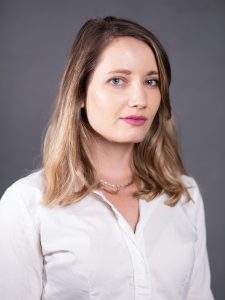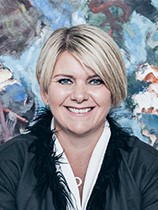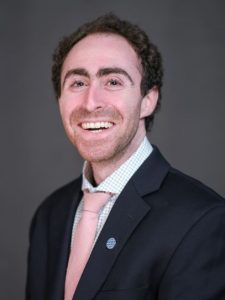As the global community continues to grapple with the coronavirus (COVID-19), the Atlantic Council is open for business. Our business, meetings, and events, however, are occurring virtually. For more information, please read an update from our President and CEO.
Event recap
On December 17, 2020, the Atlantic Council Global Energy Center hosted Tim Latimer, founder and chief executive officer of Fervo Energy, as part of EnergySource Innovation Stream, an online series that highlights new energy technologies with the potential to reshape the global energy system.
Latimer delivered a presentation on how Fervo Energy, a next-generation geothermal developer, is employing novel drilling techniques to scale geothermal energy production. Randolph Bell, Richard Morningstar chair for global energy security and director of the Atlantic Council Global Energy Center, provided introductory remarks and moderated the discussion.
Latimer began the conversation by discussing the impacts of COVID-19 on the geothermal energy sector. He explained that, as result of the pandemic shock to oil and gas production, the geothermal industry, as a bidding competitor with the fossil fuel sector, has witnessed improved cost structures in comparison. Latimer noted that as geothermal energy prices have fallen, market demand for clean electricity during the past year has remained strong.
In taking an audience poll, Bell and Latimer identified the United States as the world leader in geothermal energy capacity with 3,600 megawatts of installed capacity, while recognizing Kenya as the country with the highest percentage of electricity derived from geothermal energy at over 50 percent.
Latimer then began his presentation and provided background on his career as a drilling engineer in the oil and gas industry, and highlighted how his passion for combatting the effects of climate change inspired him to work in the geothermal energy industry. Fervo Energy is focused on unlocking the geothermal industry’s untapped potential through developing innovative drilling techniques that would enable developers to increase and expand access to geothermal energy and unearth the “100 plus gigawatt (GW) clean electricity prize” that full-scale national development could offer.
Geothermal energy is sourced from hot spots that result from geologic or volcanic activity, faults, and other terrestrial movements that drive heat closer to the Earth’s surface, and is harnessed through deep injection wells. This process is emissions-free and reliably baseload, as the energy source is the natural heat from the Earth and not dependent on seasonal variability like wind and solar. Geothermal power has residential, industrial, and utility-scale applications; Fervo currently focuses on developing geothermal projects for utility-scale power. In the United States, there are about 3.7 GW of geothermal energy installed and there is a total of about 15 GW worldwide. According to Latimer, there are three main reasons to keep a close eye on the geothermal sector in 2021: 1) renewable development costs are dropping, 2) increasing numbers of decarbonization policies are incentivizing governments and firms to move towards 100 percent clean energy, and 3) greater numbers of new market entrants are buying clean energy directly.
In making the technological case for innovative geothermal development, Latimer described how cost declines in solar and wind coupled with an increase in drilling productivity has created great opportunity to reduce geothermal drilling costs. Aside from technological innovations, the move towards clean energy policy is also encouraging; several states with significant geothermal resource potential, like Nevada and California, have adopted 100 percent clean electricity standards and goals. Latimer also mentioned that the shift in corporate renewable energy procurement towards 24/7 carbon-free energy is very encouraging for geothermal energy development.
As governments and companies set decarbonization goals, Latimer emphasized that geothermal energy is uniquely positioned to supplement solar and wind energy as a firm, zero-carbon resource that is reliable, scalable, and inexpensive.
With regard to Fervo’s own research and development, Latimer highlighted the company’s partnerships with the US Department of Energy to develop innovative drilling techniques through the Frontier Observatory for Research in Geothermal Energy (FORGE) and with the California Energy Commission to expand critical minerals efforts. Fervo has also established new partnerships with oil and gas companies such as Shell, Chevron, and BP, as well as investors like Breakthrough Energy Ventures and Baruch Future Ventures.
Latimer described Fervo’s edge as its innovative approach to traditional drilling techniques. The company employs precision directional drilling that goes moves horizontally in the geothermal reservoir and facilitates greater access to subterranean resources in previously hard-to-exploit areas. Fervo estimates that this technique results in flow rates that are four times higher than those from legacy drilling, and a reservoir quality that results in lower costs and increased predictability. Given the direction the renewable industry is moving and the scale of ongoing geothermal innovation, Latimer opined that geothermal energy, in providing reliable, carbon-free baseload power, could play a significant role in helping the US achieve national clean electricity goals. This could be accomplished, according to Latimer, with broad policy support for geothermal energy, narrative storytelling that inspires stakeholders, and innovation in technologies that motivate consumer demand.
The audience Q&A session commenced with a discussion on where potential geothermal energy capacity is located. Latimer underscored that although installed capacity is primarily found in the Western United States, Hawaii, and Alaska, advanced technologies like enhanced geothermal systems and strong policy support could facilitate an expansion in geothermal energy production to other regions and states in the long term. In addressing geothermal’s relationship with solar and wind, Latimer emphasized that geothermal energy is extremely valuable when it functions as a supplement to other renewables and in a scenario where a state is looking to decarbonize at high percentages.
Maria Castillo is a spring 2021 intern at the Atlantic Council Global Energy Center.
Featuring

Tim Latimer, founder and chief executive officer, Fervo Energy
Tim Latimer is the cofounder and chief executive officer of Fervo Energy. Fervo commercializes technology to develop, own, and operate geothermal assets as the dispatchable foundation to a 100% clean energy future. Tim began his career as a drilling engineer with BHP Billiton where he worked in the Permian and Eagle Ford basins. With a growing appreciation of the urgency and importance of climate change, Tim left the oil and gas industry 2015 to pursue an MBA and an MS in Environment and Resources from Stanford University and learn how to best contribute to the clean energy transition. Tim has also worked as a consultant for the Boston Consulting Group and as a consultant for startups Biota Technology and McClure Geomechanics. Tim is a fellow at Cyclotron Road and the Clean Energy Leadership Institute. He holds a degree in Mechanical Engineering from the University of Tulsa and is a proud native of Texas.
Related experts
Learn more about the Global Energy Center

The Global Energy Center develops and promotes pragmatic and nonpartisan policy solutions designed to advance global energy security, enhance economic opportunity, and accelerate pathways to net-zero emissions.



